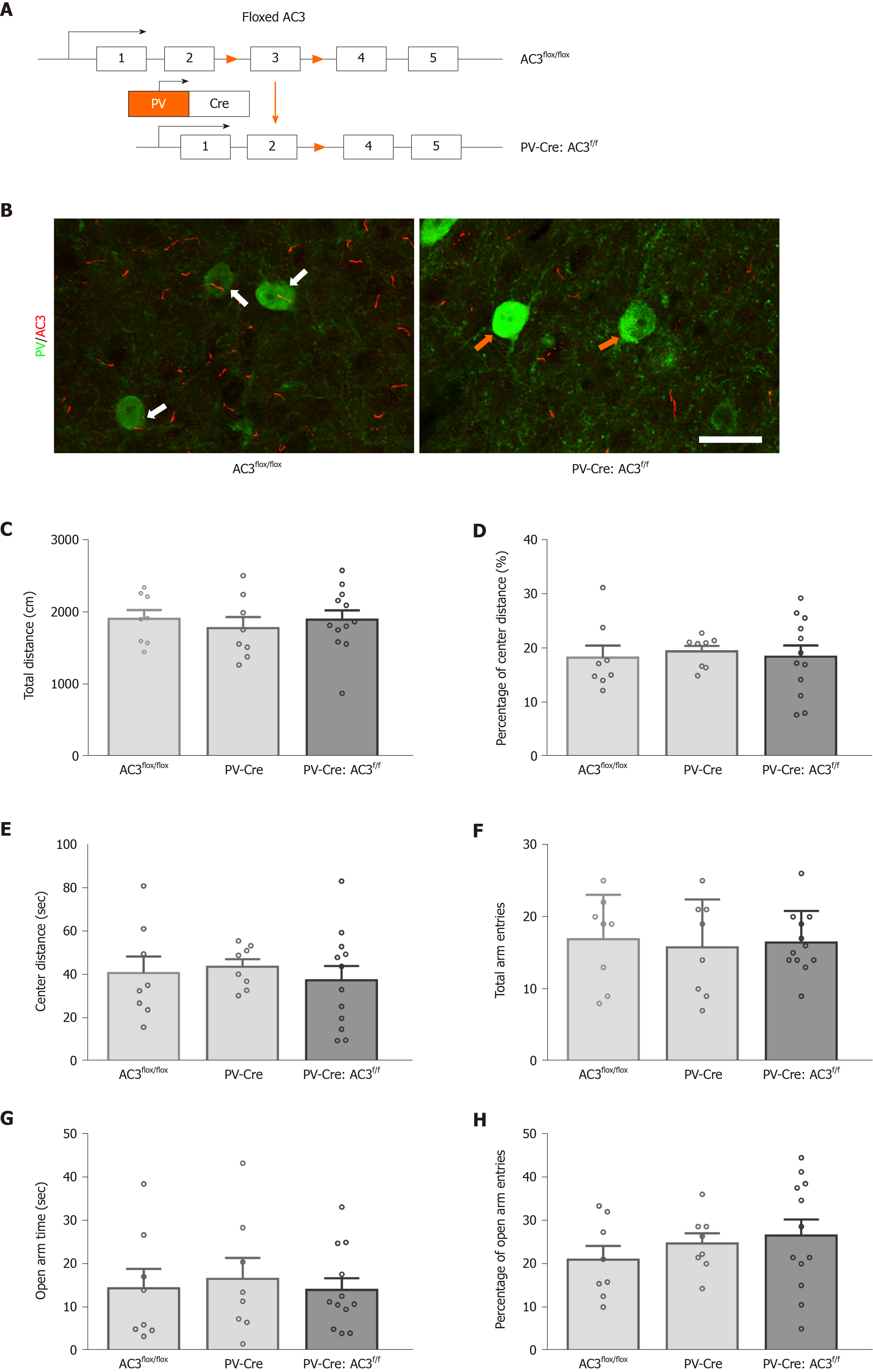Copyright
©The Author(s) 2021.
World J Psychiatr. Feb 19, 2021; 11(2): 35-49
Published online Feb 19, 2021. doi: 10.5498/wjp.v11.i2.35
Published online Feb 19, 2021. doi: 10.5498/wjp.v11.i2.35
Figure 5 Parvalbumin-Cre recombinase:type 3 adenylyl cyclasef/f mice did not show anxiety-like behavior.
A: Strategy for generation of parvalbumin-Cre recombinase:type 3 adenylyl cyclasef/f (PV-Cre:AC3f/f) mice in which AC3 was selectively deleted in PV+ interneurons; B: Double immunohistochemistry showing the representative micrographs of AC3 protein expression (red) in PV+ interneurons (green) from AC3flox/flox control mice (left) and PV-Cre:AC3f/f mice (right). Solid arrows indicated that PV+ interneurons have well colocalization with AC3 in AC3flox/flox control mice. Empty arrow indicates that AC3 immunostaining disappeared in PV+ interneurons in PV-Cre:AC3f/f mice. Scale bar: 20 μm; C-E: Showing PV-Cre:AC3f/f mice showed similar total distance (C), percentage of center distance (D) and center time (E) in the open field test to control group; F-H: PV-Cre: AC3f/f mice exhibited comparable total arm entries (F), open arm time (G) and percentage of open arm entries (H) in elevated plus maze test compared with AC3flox/flox mice and PV-Cre mice. Bars represent the mean ± standard error of the mean. Data were analyzed using one-way analysis of variance followed by post hoc Tukey's multiple comparisons test. n = 8 for AC3flox/flox group, n = 8 for PV-Cre group, n = 12 for PV-Cre:AC3f/f group.
- Citation: Yang XY, Ma ZL, Storm DR, Cao H, Zhang YQ. Selective ablation of type 3 adenylyl cyclase in somatostatin-positive interneurons produces anxiety- and depression-like behaviors in mice. World J Psychiatr 2021; 11(2): 35-49
- URL: https://www.wjgnet.com/2220-3206/full/v11/i2/35.htm
- DOI: https://dx.doi.org/10.5498/wjp.v11.i2.35









